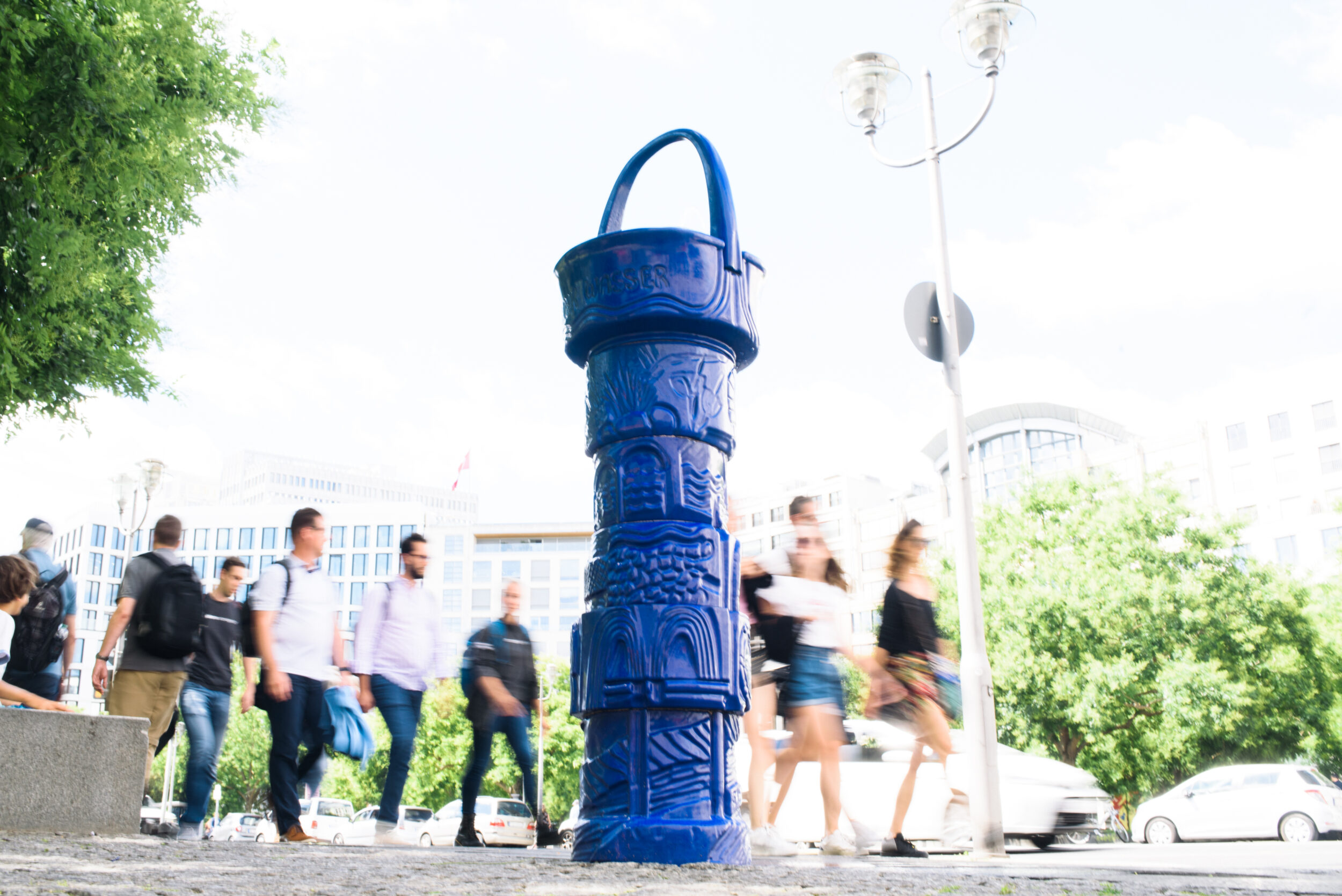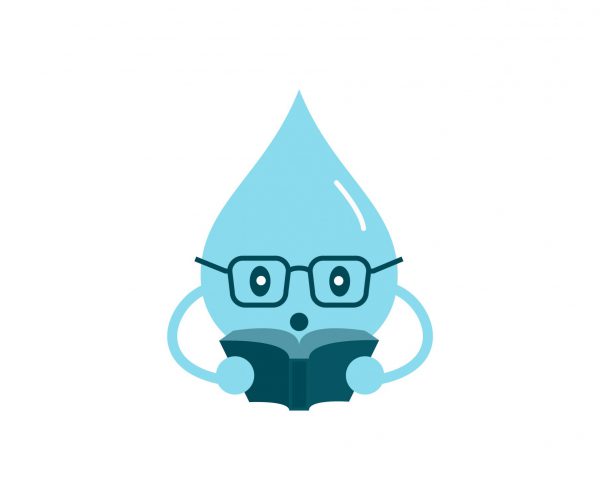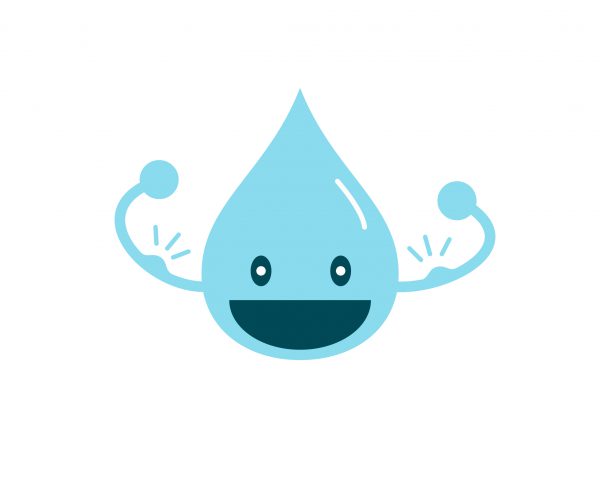Questions about tap water in everyday life
Is Berlin water safe to drink?
Why can’t I get a glass of tap water at a restaurant?
Where can I find tap water while traveling around Berlin?
How does recycling plastic bottles work in Berlin?
An All Things Water Guide to a First-Time Visitor to Berlin
Like every new country or city you might travel to, there are numerous new variables that every traveler should be aware of. I would argue that some of the most important things are staying hydrated and being as environmentally friendly as possible. When I first arrived in Berlin, I was shocked by the lack of public water access and the increased use of plastic water bottles. I kept carrying around my empty refillable water bottle hoping to stumble upon some sort of way to refill it. When my program manager took my cohort and me out for dinner, she actually made it a point to ask the server for a glass of tap water to prove that restaurants will not serve it. When asked, the server looked confused and flat-out refused to give us tap water. He returned moments later with quite a small glass bottle of water that cost me four euros.
But, good news. You can stay hydrated and environmentally conscious while living in Berlin by simply drinking tap water.
Tap Water in Berlin
Germany has some of the best quality drinking water in the world and therefore it is completely safe to drink out of a faucet. Berlin’s tap water is sourced from groundwater that is naturally purified and further treated through Berlin’s water treatment facilities.
The water quality is checked continuously to meet the high requirements for drinking water set by the Drinking Water Ordinance (TrinkwV). Interestingly, Berlin’s tap water does not contain chlorides or fluorides due to the Drinking Water Ordinance’s high standards on chemical contaminants. This arises questions about the water’s possible exposure to bacteria that chloride would typically take care of. As the water is taken from groundwater levels beneath sand layers, there is very rare exposure to bacteria and thus no threat to human health.
Another potential source of concern would be the concentration of lead in water due to lead pipes. Berlin stopped installing lead pipes in 1973 and the majority of lead pipes have been replaced since then. If there is a reason for concern with regard to lead contamination, water samples can be sent to a lab to test the concentrations. The Berliner Wasserbetriebe does water testing for around 20 euros or the service is free for households with pregnant people and children less than 12 months old (https://www.bwb.de/en/2475.php).
A tip for fresh and safe water is to make sure you run your tap water for about 30 seconds or till it runs cold. This ensures that sitting water that could contain possible contaminants can be flushed out.
Drinking Water Culture
It is interesting that Germany is such an environmentally progressive country, but is also one of the largest consumers of bottled water in Europe, with more than 14 billion liters of water drunk from bottles each year. The reason for this trend is somewhat unclear, but people usually continue to drink bottled water due to its taste, carbonation, or, alleged, superior cleanliness. I can stand by this fact because a majority of Berliners I have spoken to all continue to drink bottled water because they prefer the taste. It is so different because back in the US, a lot of people don’t like bottled water because of that plasticky taste!
When going to restaurants, bars, or cafes around the city, it is extremely difficult to simply ask for a glass of tap water. Businesses will often refuse and ask if you want to buy a water bottle.
Public Access to Tap Water
While Berlin is a city where people primarily drink water from bottles, there is access to public water fountains. There are about 220 drinking fountains located throughout the city, but with the city spanning 900 square kilometers, there is only one water fountain every 4.5 square kilometers! This is not nearly enough for the average person to rely on. But, if you do happen to come across one, it will have a continuous cycle of water flowing out that maintains the cleanliness of the water. Planning ahead to access these water fountains can be made easier by referring to this interactive map of all the water fountains throughout the city (https://www.bwb.de/de/trinkbrunnen.php). Aside from public water fountains, some cafes or restaurants allow people to refill their water bottles with tap water which can be identified by a blue sticker on a window with “Refill Station” written on it. (https://refill-deutschland.de/).
There are also green water pumps located throughout the city that are not safe to drink from. They withdraw straight from the groundwater source and can be used for emergency water access or for watering plants.
Recycling
Drinking tap water is always the best and most sustainable choice, but if you happen to be in need to buy a bottle of water, there are some things to know. There are differences between single-use plastic and reusable plastic bottles. It is better to use reusable bottles (plastic or glass) rather than single-use plastic when looking for a drink at the grocery store. While the deposit fee is higher for reusable bottles than single-use plastic, the aim is to increase the number of reusable bottles (to 70%) compared to single-use plastic in the deposit system. This is far from reality because 43% of water bottles are reusable, and 57% of single-use bottles from plastic. When you are finished with your bottles, you can turn them in to any place that sells plastic bottles and receive the deposit back. So, if you do buy bottled water, be sure to keep the bottle and recycle it.
The good thing with regard to single-use plastic bottles is that they are part of a functioning recycling system. Germany’s recycling rates are over 80%, which is relatively high compared to the average European recycling rate of 41% and the US with 35 %. Although it has to be mentioned that only ⅓ of the single-use plastic bottles find their way in new bottles while ⅔ are downcycled to non-food plastic products. Overall, I’m still trying to get used to these new systems with bottles and single-use plastic in Berlin, so I’ll just stick to tap water while I’m here.
References
Additional Reading





